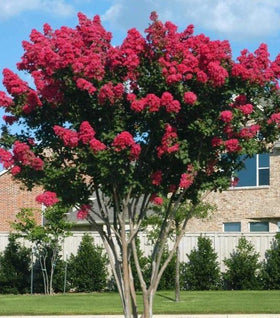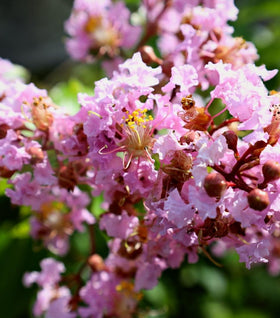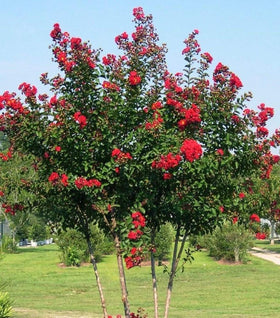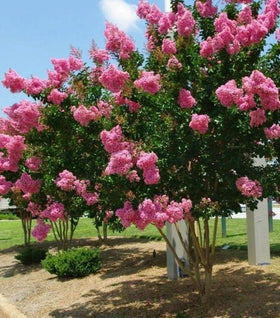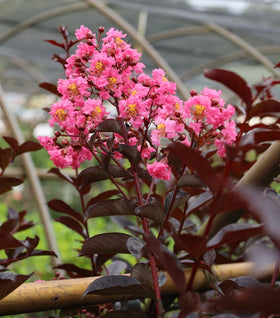Crape Myrtle Trees
Looking for months-long summer blooms with almost set-and-forget care? Crape myrtle trees deliver clusters of bold color just when most landscapes fade—plus polished bark and fiery fall foliage for year-round interest. We curate reliable, landscape-proven selections in dwarf, semi-dwarf, and tree-form sizes so you can match the perfect variety to courtyards, front walks, or statement plantings along the drive.
When you buy crape myrtle trees online from Garden Goods Direct, you get nursery-grown, zone-appropriate trees with honest specs on height, spread, bloom color, and mildew resistance—backed by our "We Grow Together" Promise. Pair one with Evergreen Shrubs, tuck in Deer-Resistant Perennials, and weave through Pollinator Plants for a garden that performs from spring to frost.
Why Choose Crape Myrtle Trees: Summer-Long Color with Low Maintenance
Crape myrtles are bred for continuous bloom, with fresh trusses replacing spent flowers through the heat of summer. From dwarf patio forms to upright tree types, they bring high-impact color in tight spaces or broad landscapes, while the exfoliating bark and glossy foliage add texture long after flowers fade.
Form, Flower & Foliage: How Crape Myrtles Shine All Season
Expect upright-oval to vase-shaped habits in tree forms and compact mounds in dwarfs. Flower palettes range from white and blush to watermelon, magenta, red, lavender, and deep purple. Many modern selections offer clean, mildew-resistant foliage, bronzy spring flush, and scarlet-to-amber fall color, plus that smooth, mottled bark for winter interest.
Brilliant Design Ideas: From Driveway Allees to Patio Showpieces
Line a drive or sidewalk with matching tree-form crape myrtles for a summer flower tunnel, or anchor a front bed with a single specimen and repeat the bloom color in nearby perennials. Dwarf types excel in foundation beds and large containers, while taller trees create lofty privacy screens that still allow light to filter through.
Easy-Care Playbook: Planting, Watering & Pruning for Success
Plant in full sun (6–8+ hrs) and well-drained soil with the root flare at or slightly above grade. Water deeply the first season; established trees are moderately drought-tolerant. Prune lightly in late winter to refine structure—remove crossing wood and old seed heads, but avoid “crape murder” (hard topping). A slow-release spring feed and 2–3 inches of mulch (applied off the trunk) help maintain high vigor.
Explore Evergreen Shrubs for a year-round backbone, Deer-Resistant Perennials for low-maintenance color, and Pollinator Plants to supercharge summer blooms.

